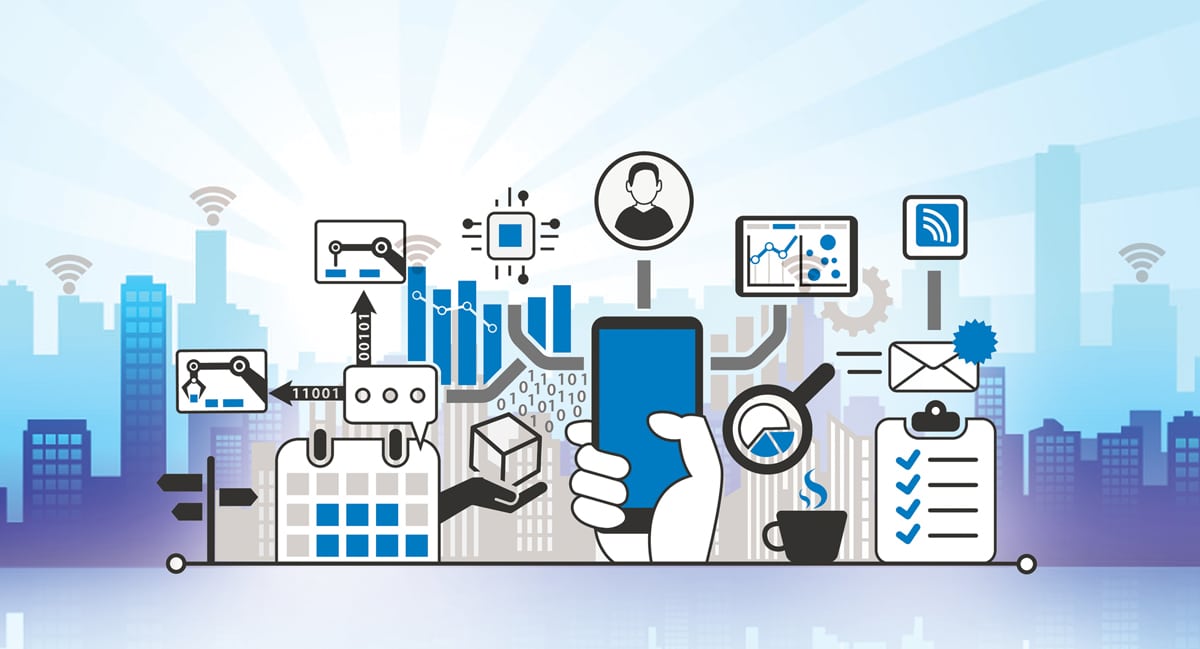 In the age of connectivity and digital disruption, the Internet of Things (IoT) has become imperative in almost every field. Here is a close look at the Indian IoT market.
In the age of connectivity and digital disruption, the Internet of Things (IoT) has become imperative in almost every field. Here is a close look at the Indian IoT market.
By the ComConnect Consulting research team
Interaction between humans and machines is on the verge of a radical shift, with the potential to unlock immense possibilities in the near future. Soon we will be able to instruct almost every object and make it respond to our presence, movements and voice commands. This will be facilitated through the Internet of Things or IoT, which refers to the network of physical objects with sensors that are connected to smartphones and computers through the Internet, to enable a ‘conversation’. With simultaneous advances in technologies such as artificial intelligence and machine learning, these conversations will help devices to enhance our lives.
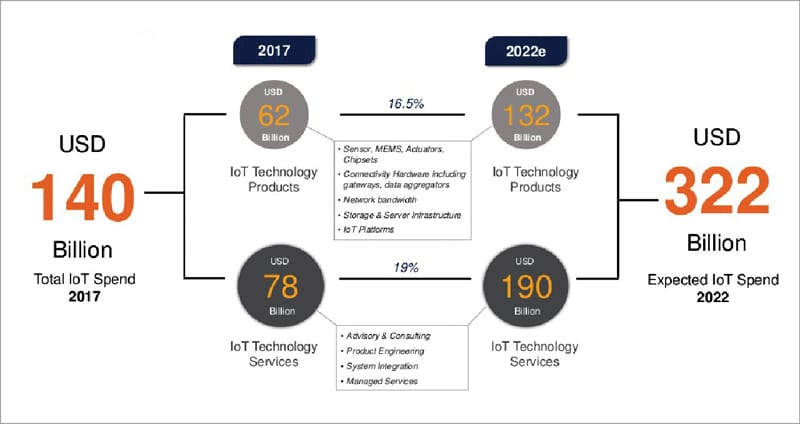
IoT not only has the potential to increase industrial automation and bring connected devices to our homes, but also presents an opportunity to transform society and establish a new ecosystem to serve humans and humanity. In an IoT enabled world, people will receive uniquely personalised services, on demand, while societies will benefit from optimised resource use with minimal impact on the environment.
As the world gets increasingly connected, global IoT spending is set to rise significantly. Though there are nagging security concerns that are yet to be addressed, a study by Cradlepoint (an industry leader in cloud-delivered 4G LTE network solutions for businesses, service providers and government organisations) reveals that close to 70 per cent of organisations have adopted, or plan to adopt, IoT solutions within the next year. Gartner forecasts 20.8 billion connected devices by 2020.
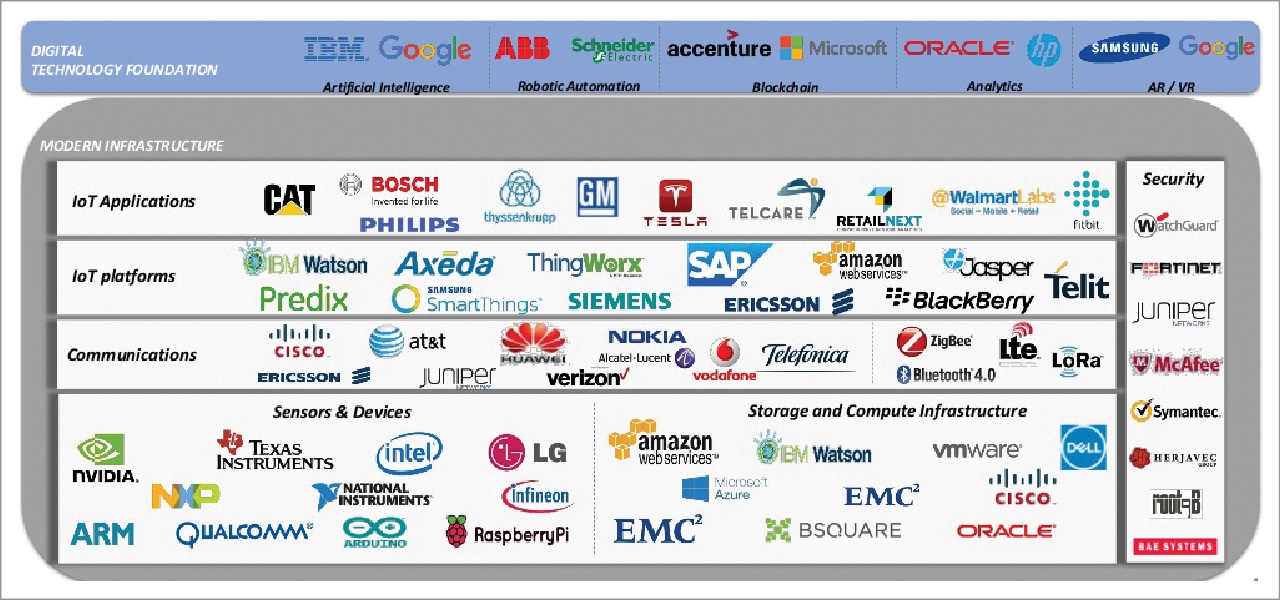
The Indian IoT market
India, too, is witnessing a steady growth in IoT adoption. The IoT market in India is currently growing at a compound annual growth rate (CAGR) of 41 per cent and will continue to grow at the same rate till 2020. Though India began its IoT journey much later than the developed economies, the installed base of connected units is expected to grow at a rate that’s much faster than these advanced countries. Deloitte predicts that India will be a rapidly growing hub for Internet of Things (IoT) solutions, with an expected market of US$ 9 billion and an installed unit base of 1.9 billion by 2020.
In India, IoT has three broad areas of application—industrial, consumer and the public sector.
Industrial applications: Globally, as well as in India, industrial adoption of IoT has far exceeded consumer applications. The term ‘Industry 4.0’ heralds the coming of a new industrial revolution through smart manufacturing. IoT is expected to drive operational efficiencies through automation, connectivity and analytics. Industrial applications of IoT broadly include improved automation, efficient tracking, and effective management through connected systems. In India, sectors such as manufacturing, automotive, transportation and logistics are experiencing the highest adoption levels of IoT.
Typical industrial applications include the following:
- Manufacturing/supply chain – improved process automation, connected factory, robotics, tracking of goods, tools, etc
- Agriculture – handheld devices to figure out moisture/pH levels in soil, etc
- Transportation – improved vehicle tracking, traffic management
- Energy – efficient management of energy usage, detecting potential faults, etc
According to IDC, more than 50 per cent of India’s corporate leaders believe IoT is imperative for remaining ‘digitally fit’, and 60 per cent see it as being critical to gaining a competitive advantage.
Consumer applications: While organisations expect IoT to increase automation, and therefore improve productivity, consumers expect IoT to improve the overall quality of their lives. Research conducted by Tata Communications (presented in Figure 5) showcases consumer expectations from IoT.
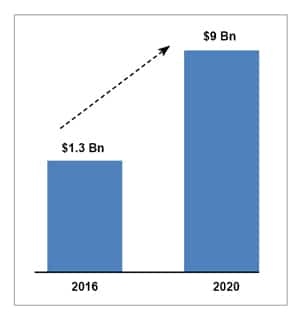
Among the general public, awareness about IoT is limited. A large number (~ 35 per cent) of people from the same survey relate IoT with only smartphones. Though this is not incorrect, IoT is much more than just the mobile phone. Only ~14 per cent of all the people surveyed (Figure 6) referred to IoT as ‘devices and appliances connected to and working with each other’.
Though most of the current developments in IoT have been focused on industrial opportunities, there has been traction in the consumer space too. IoT applications for consumers are opening up new entertainment experiences. Preferences for smart sensors, wearable and clustered systems like fitness trackers, as well as smart homes have triggered growth in the application of IoT in the consumer electronics space. There are already smartphone applications that can lock doors, reset thermostats, etc. Firms are coming up with ways of cooking that can be operated and monitored from the comfort of the living room sofa, using the smartphone. The increasing sophistication of the sensors used makes it possible for devices to understand consumers in ways that are unprecedented. Table 2 mentions various consumer focused IoT applications.
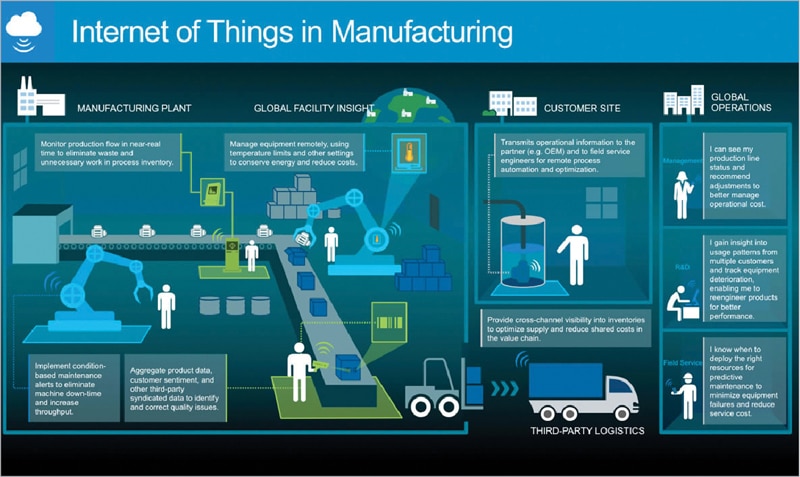
The public sector: IoT has significant applications in the public sector as well. The chart in Figure 8 showcases the potential uses of IoT in this sector. In India, the government’s ‘Smart Cities’ initiative is expected to be a key enabler for IoT adoption across a large number of these areas.
Opportunities galore
The IoT market offers immense revenue generation opportunities in the following areas:
- Business intelligence (BI) and analytics for decision support
- Security level management and performance management
- Professional services including consulting, integration and software development
- Connectivity and communication services, and associated hardware, devices and components

Though it is perceived that value added services such as BI and analytics will be significant revenue drivers, fundamental areas such as device connectivity and communications hardware are also likely to generate sizeable revenue through sheer volumes, when deployed widely. This will no doubt impact the demand for electronic components. Individual IoT

devices will inevitably require a microcontroller to add intelligence to the device, one or more sensors to allow for data collection, one or more chips for connectivity and data transmission, and a memory component. The connected devices that transmit information across the relevant networks will rely on innovations from semiconductor companies—highly integrated microchip designs, for instance, and very low-power functions in certain cases.
Additionally, a new array of sensors based on micro electromechanical systems (MEMS) technology is rapidly being developed to enable IoT applications that go beyond just motion and image sensing. These include applications that measure humidity, altitude, food calorie composition, and various human health indicators. With connectivity being a key capability required in IoT applications, there are multiple communications standards and protocols in place for consumer electronics and industrial devices, like for low power and personal area wireless mesh networks, which are primarily suited for sensors.
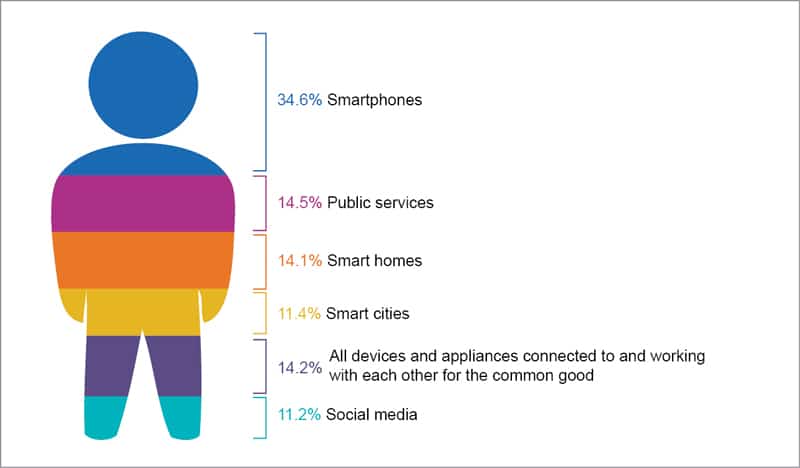
IoT applications usually require a single chip in an acceptable form factor and low power consumption for battery-operated devices. This requirement is a factor for the growth in SoCs with embedded cores, GPUs and integrated wireless connectivity in a single package.
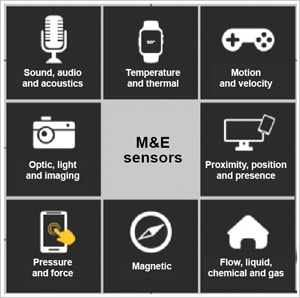
Progress in these technologies has allowed the development of IoT devices such as sensors that have compute, storage and network capabilities built into extremely small form factors, yet with low energy requirements.
On the services front, one emerging requirement will be asynchronous data transmission by the device. This will lower the cost of the device and the entire infrastructure, but will need security in order to prevent tampering of the data transmitted by the device. And a reduction in the ISO-OSI stack will help; working closer to the PHY layer is better due to the lower costs, power usage, carbon dioxide emissions, etc.

Challenges and hurdles
Though IoT is creating and will continue to create immense opportunities for both industry and consumers, like all aspects of technology, it comes with its own share of risks. As is common when anything new comes onto the stage, legislators across the world are looking to formulate new regulatory frameworks to plug vulnerabilities and ensure smooth functioning. To realise the full potential of IoT, businesses and governments need to work together to overcome the impediments that lie in its path.
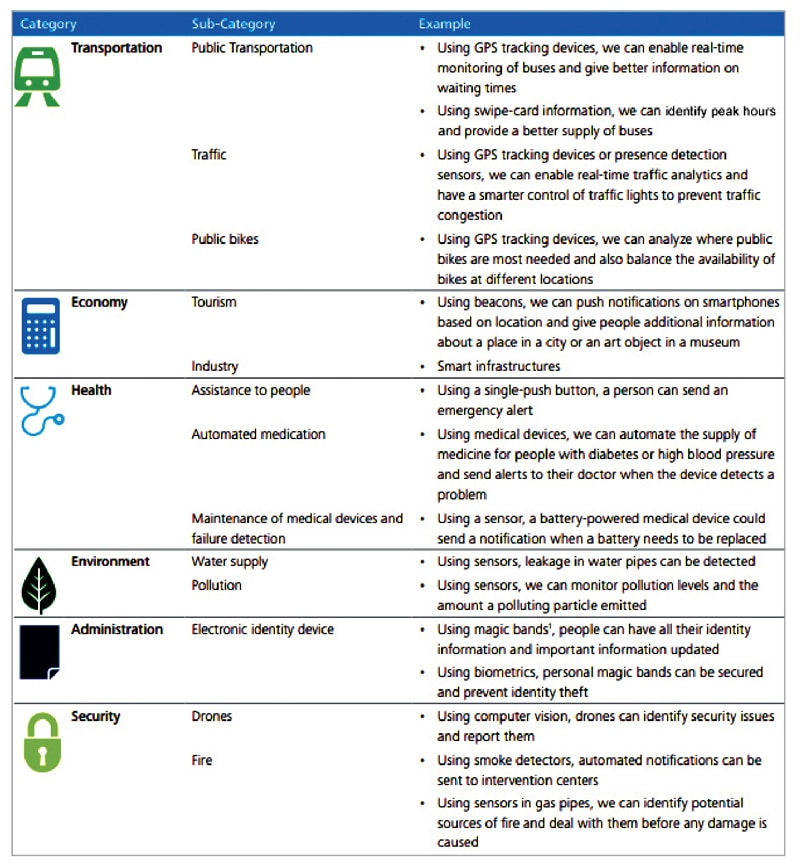
Cyber security has already gained notoriety across the world due to increased incidents of cyber attacks, espionage and data breaches. With the number of connected devices increasing, and virtual and physical worlds getting seamlessly integrated, present security measures will no longer remain adequate. Organisations will require enhanced security 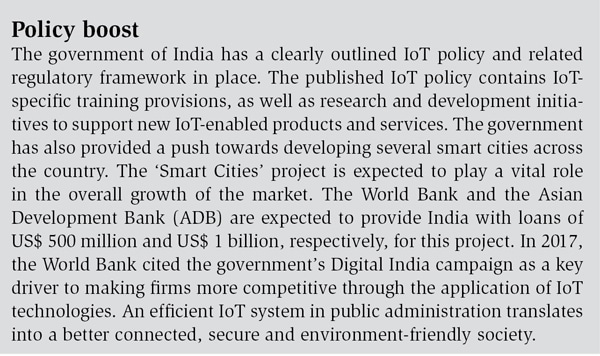 frameworks—from device-level authentication and application security, to system-wide assurance, resilience and incidence-response models.
frameworks—from device-level authentication and application security, to system-wide assurance, resilience and incidence-response models.
Another critical hurdle is the lack of interoperability among existing systems, which will significantly increase complexity and costs for IoT deployments. Present day technologies
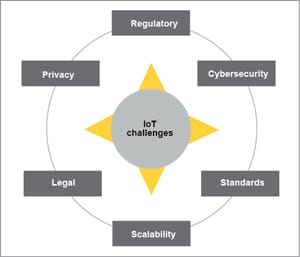
work largely in silos. However, in the future, a fully functional digital ecosystem will require seamless data sharing between machines and other physical systems from different manufacturers.
Moving forward
As IoT adoption continues to grow, and offerings mature, firms will need to stay tuned to customers and their evolving requirements, and to innovate to suit evolving needs. IoT leaders will need to focus on a few areas to remain ahead of the pack: a) managing the risks, b) developing a partner ecosystem, and c) facilitating innovation.

India needs to build capabilities in the manufacture of sensors (to adapt to the extreme climate/rugged terrain in the country) along with network infrastructure, standards, etc. Accelerators and incubators in India are already enabling startups to build innovative IoT solutions. Last but not the least, addressing the current talent gaps in cross-functional as well as specialised skillsets is imperative for the growth of IoT in India.



























